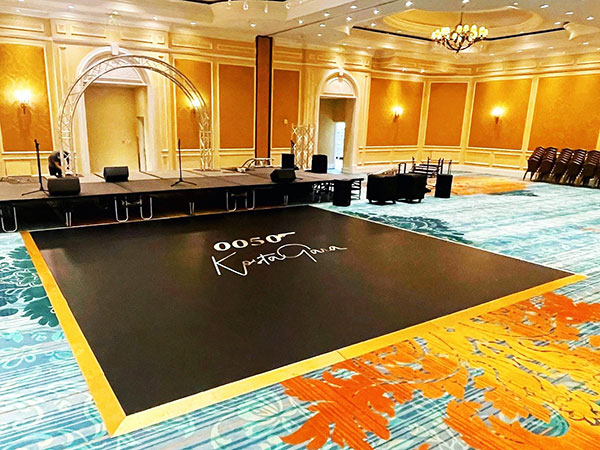Investigating the Advantages and Drawbacks of Timber and Synthetic Dance Surface Materials for Ideal Functionality and Aesthetics
Investigating the Advantages and Drawbacks of Timber and Synthetic Dance Surface Materials for Ideal Functionality and Aesthetics
Blog Article
As it comes to choosing the right dancing floor material, timber and synthetic are two popular choices that performers and dance studio proprietors often evaluate. Each substance has its own distinct benefits and disadvantages that can influence performance, safety, and aesthetics. Understanding these differences is crucial for arriving at an educated decision that meets the requirements of performers and enhances the overall environment in a dance studio or showcase area.
Wood dancing surfaces are often favored for their classic appearance and feel. They provide a natural area that can take in shock, which is advantageous for performers who perform intense actions. The elasticity of timber helps reduce the risk of harm, such as sprains and strains, by offering a supportive area. Additionally, timber surfaces can be refinished, enabling them to keep their appearance over the years. This longevity makes them a long-term investment for dancing studios. However, timber surfaces can be more expensive to set up and maintain compared to vinyl choices, and they may need regular upkeep to avoid warping or damage from humidity.
Conversely, vinyl dancing floors offer a range of benefits that make them attractive to many dancing studios. One of the main benefits of synthetic is its cost-effectiveness. Synthetic flooring is generally more affordable to buy and install than wood, making it a budget-friendly choice for spaces. Furthermore, synthetic is available in a variety of colors and patterns, enabling for more customization to match the aesthetic of the space. Synthetic surfaces are also simpler to maintain and care for, as they are resistant to stains and water. However, some dancers may find that vinyl does not provide the same level of impact cushioning as timber, which could result to unease during extended practice sessions.
Another important factor to consider is the type of dancing being executed. Various dance styles may require different floor surfaces for optimal execution. For instance, classical ballet performers often favor timber surfaces because they offer a solid area for spins and leaps. In comparison, styles like hip-hop or jazz may benefit from the non-slip properties of synthetic. It is essential for dance studio proprietors to take into account the main dance styles taught in their space when choosing a surface material. This evaluation can help guarantee that dancers have the best possible environment while rehearsing and executing.
Visual appeal also holds a major role in the choice procedure. Timber surfaces are often linked with sophistication and heritage, making them a favored option for elegant dancing spaces and performance venues. The natural texture and warmth of timber can establish a inviting atmosphere that improves the check out here general feeling for both performers and audiences. Conversely, vinyl floors can be crafted to replicate the appearance of timber or alternative substances, offering a contemporary and stylish look. The decision between wood and synthetic can ultimately hinge on the desired atmosphere of the area and the impact that studio owners want to establish.
In summary, both timber and vinyl dancing floors have their own set of advantages and disadvantages that can influence execution and aesthetics. Wood surfaces offer durability, shock cushioning, and a traditional appearance, while vinyl surfaces offer affordability, ease of upkeep, and styling versatility. The decision between these substances should be determined on the particular needs of the performers, the types of dancing being performed, and the overall vision for the studio. By carefully evaluating these elements, dance studio proprietors can establish an atmosphere that enhances best performance and enhances the enjoyment of dancing for all participating.